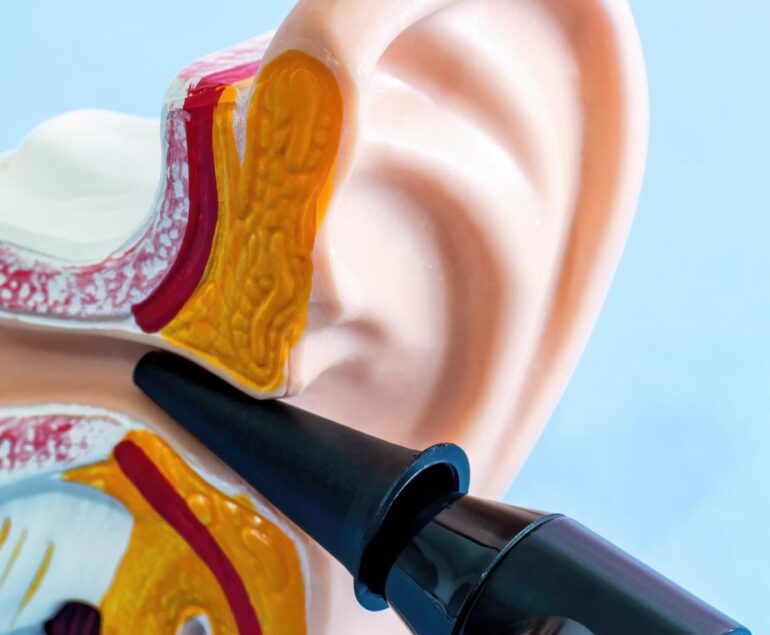Introduction: The Evolution of Hearing Aid Technology
Hearing aids have undergone a remarkable transformation, revolutionizing the way individuals with hearing impairments experience the world. These devices, designed to amplify sounds for better auditory perception, have evolved significantly from their humble beginnings.
Types of Hearing Aids
Behind-the-ear (BTE)
One of the most common types, BTE hearing aids, rest comfortably behind the ear and are connected to a custom earpiece.
In-the-ear (ITE)
ITE hearing aids are custom-fit to sit inside the outer ear, offering a discreet yet effective solution for hearing loss.
Receiver-in-canal (RIC)
RIC devices are similar to BTE aids but with a smaller receiver placed inside the ear canal, providing enhanced comfort.
Completely-in-canal (CIC)
CIC aids are tiny and fit entirely inside the ear canal, offering a nearly invisible solution with improved sound quality.
Invisible-in-canal (IIC)
IIC aids, as the name suggests, are virtually invisible when worn, offering both discretion and functionality.
Recent Technological Advancements
The last decade has witnessed groundbreaking innovations in hearing aid technology. Digital signal processing (DSP) has revolutionized sound processing, ensuring clearer and more natural sound reproduction. Bluetooth connectivity enables seamless integration with smartphones and other devices, allowing users to stream audio directly to their hearing aids.
Artificial intelligence (AI) has made remarkable strides in the field, enabling hearing aids to adapt intelligently to various environments. Moreover, the shift toward rechargeable batteries has simplified maintenance while being environmentally friendly.
Benefits of Innovative Hearing Aids
The incorporation of cutting-edge technology has yielded multifaceted benefits for users. Enhanced sound quality provides a richer auditory experience, while customizable features cater to individual preferences. Moreover, the sleek and comfortable designs of modern hearing aids ensure both functionality and aesthetics.
Challenges and Solutions
Despite technological advancements, challenges persist, including compatibility issues with certain devices. However, proper maintenance and care significantly prolong the lifespan of these aids. Regular cleaning and servicing ensure optimal performance.
Future Trends in Hearing Aid Technology
Looking ahead, the future of hearing aid technology holds promise. Advancements in AI and machine learning are expected to further personalize hearing experiences. Additionally, the integration of biometric sensors and augmented reality might redefine how individuals perceive sound.
Accessibility and Affordability
Ensuring access to innovative technology remains crucial. Initiatives advocating for affordability and insurance coverage play a pivotal role in making these life-changing devices accessible to all.
Professional Insights from Dr. Vivek Kumar Pathak
As an ENT Surgeon, Dr. Vivek Kumar Pathak emphasizes the significance of these technological advancements. He underscores the importance of seeking professional guidance and personalized recommendations when considering hearing aids.
User Experience and Testimonials
Real-life testimonials highlight the positive impact of innovative hearing aids on individuals’ lives. Improved communication, increased confidence, and enhanced social interactions are common experiences shared by users.
Conclusion: Embracing the Future of Hearing Aid Innovations
Innovations in hearing aid technology have transformed the landscape of auditory solutions. With ongoing advancements promising even more personalized and efficient devices, embracing these innovations ensures a brighter future for individuals with hearing impairments.
FAQs
- Are all hearing aids suitable for every type of hearing loss?
- No, hearing aids come in various types, and their suitability depends on the individual’s specific hearing loss. It’s essential to consult with an audiologist or an ENT specialist to determine the most appropriate type for your particular condition.
- How often should I get my hearing aids serviced?
- Regular maintenance is crucial for the optimal performance of hearing aids. Generally, it’s recommended to have them professionally serviced every six months to a year. However, cleaning them daily and following the manufacturer’s instructions for maintenance is equally important.
- Do innovative hearing aids work well in noisy environments?
- Yes, many advanced hearing aids are equipped with features designed to enhance speech intelligibility in noisy environments. They utilize technologies like directional microphones and noise reduction algorithms to improve listening experiences even in challenging situations.
- Can children benefit from these advanced hearing aids?
- Absolutely. Innovative hearing aid technologies cater to individuals of all ages, including children. Pediatric-specific hearing aids are available, designed to address the unique needs of younger users while providing improved hearing and communication abilities.
- Are there any limitations to using Bluetooth-enabled hearing aids?
- While Bluetooth-enabled hearing aids offer remarkable connectivity and streaming capabilities, they might have limitations concerning compatibility with older devices or certain operating systems. Additionally, distance and interference can sometimes affect connectivity, but advancements continually address these issues for improved functionality.
About Author:
Dr. Vivek Kumar Pathak: Renowned ENT Surgeon, Senior Professor, and Founder.
Dr. Pathak, ENT surgeon at Kailash Hospital, Senior ENT Professor at Sharda University, and founder of Entegrity Care, brings expertise and innovation to healthcare. Discover the visionary behind Doxtreat Healthcare, shaping the future of ENT care.
Website www.drvivekpathak.com
Call +917838450942
WhatsApp +91 78384 50942
Book an appointment with Dr. Vivek kumar Pathak by filling the form.



